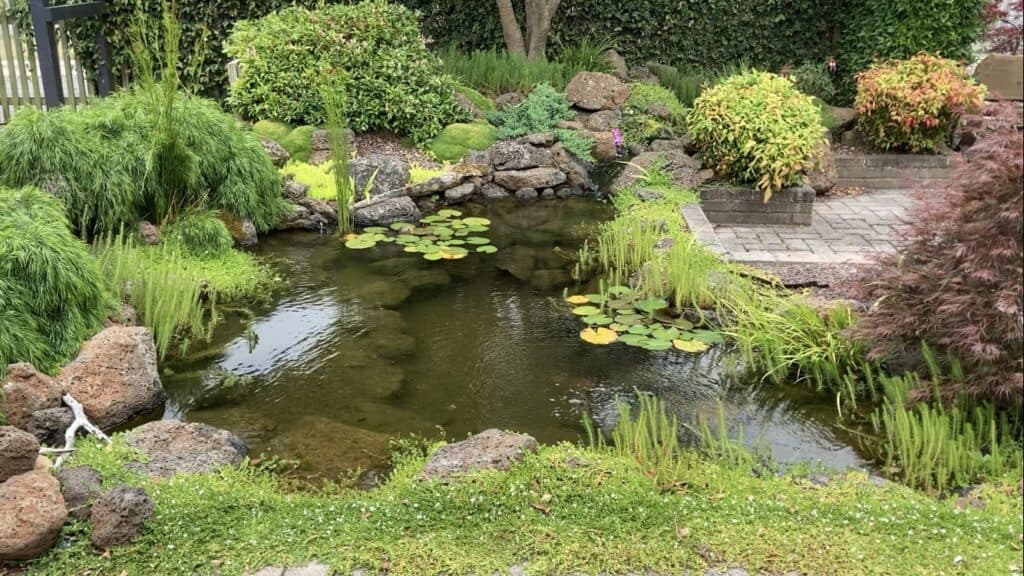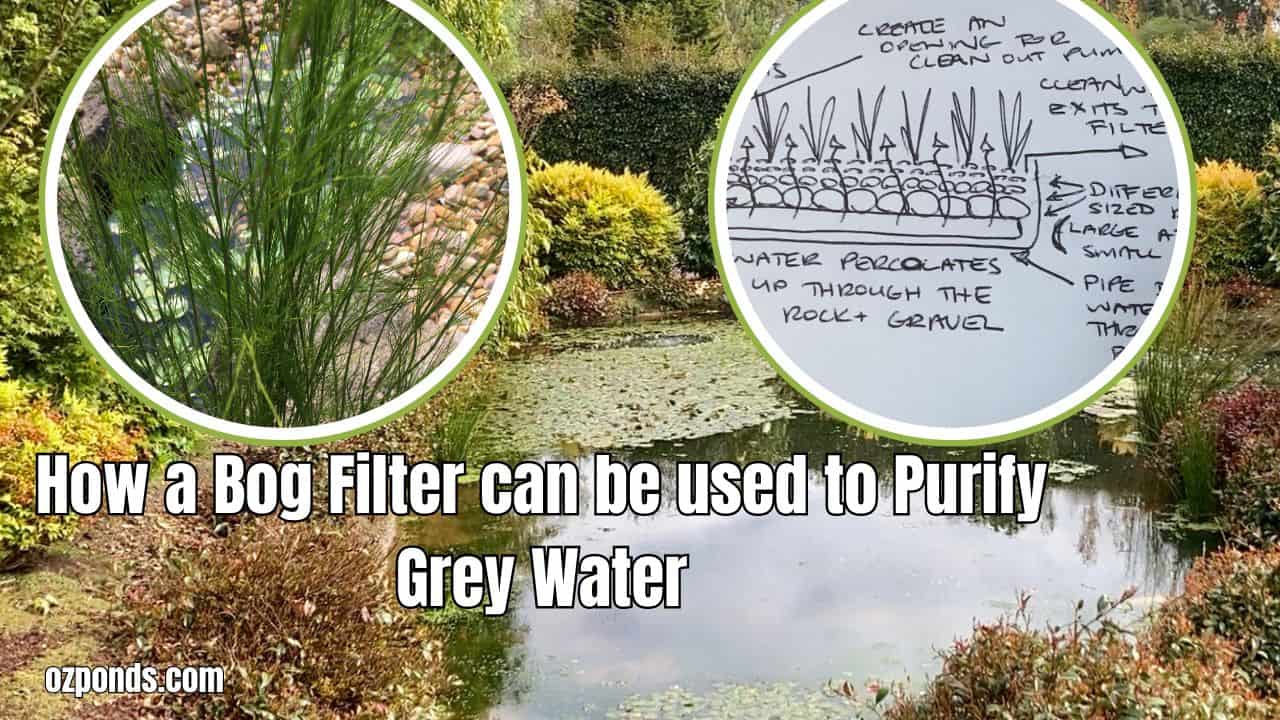One of the questions I’ve been getting lately is whether a bog filter can be used to process greywater.
Interestingly, one of my earliest pond-related projects was setting up a greywater wetland on my property over ten years ago. This turned out to be one of the best decisions I’ve made, especially given the soggy conditions in my area.
In this post, I’ll share what I’ve learned, how I built my system, and some best practices if you’re considering doing the same. If you prefer video content, I also made a video:
Why I Built a Greywater Wetland
Living on a larger property with a septic system, I wasn’t connected to the city’s sewer or wastewater treatment facilities.
Every spring, the ground around the septic lines turned into a swamp, making it difficult to mow the lawn without getting stuck.
Worse yet, the idea of wastewater bubbling up to the surface was anything but hygienic.
So, I decided to divert the greywater from my septic system into a wetland. By doing so, I reduced the amount of water flooding the septic lines, improving their overall efficiency.
Harmful pathogens stayed safely underground, and my lawn remained usable year-round.
Ten years later, this system is still working perfectly. In fact, every time the septic tank gets pumped, the technician comments on how healthy the system is!
What is Gray Water?
Before diving into the system details, it’s important to clarify the difference between black water and greywater.
- Blackwater: This includes the dirty water from your toilets and kitchen sink—water that is generally full of pathogens and contaminants.
- Greywater: This is much cleaner, consisting of water from your showers and laundry. Some people are even comfortable using gray water from bathroom sinks.
In many areas, local regulations will allow you to discharge gray water directly into your garden, but it’s always a good idea to check the specific rules in your area.
Keep in mind that gray water is typically used immediately or within 24 hours, as stagnant water can develop unwanted growths.
How a Greywater Wetland Works
A graywater wetland essentially acts as a natural filter. Plants and bacteria work together to remove impurities, mimicking how water is naturally cleaned in ecosystems. This process is very similar to how a bog filter cleans pond water.
For my system, I designed it to process shower and laundry water. I wanted the water to move slowly through the wetland, taking about 3 to 4 days to complete its journey. This allows it enough time to come into contact with the bacteria, microbes, and plant roots that help filter it.
Here’s a quick summary of how I calculated the water volume:
- Washing machine: Most machines specify how much water they use per cycle.
- Shower water: I used a bucket to measure how much water the shower uses per minute, then multiplied that by the number of minutes my family typically showers each day.
Building My Greywater Wetland
I chose a gravel bed system, which is one of the most common types for graywater wetlands. Wetland plants are directly planted into the gravel, and I created partitions to force the water to move from one area to another, maximizing filtration.
One of the key components is a settling chamber for capturing solids. I used a square drainage pit (Amazon link) where water enters, allowing solids to settle at the bottom while cleaner water overflows into the wetland.
If I could go back, I’d make the settling chamber larger to slow the water flow even more, but it works well enough for now.
Some other designs I’ve seen use mulch or wood shavings to trap solids, which you can replace periodically to keep the system running smoothly.
Best Practices for a Greywater Wetland System
Here are some of the best practices I’ve learned along the way:
- Slow water flow: Aim for the water to move through the system over several days. This gives the plants and bacteria enough time to clean it properly.
- Discharge underground: Ensure the greywater is discharged below ground to prevent contact with humans and animals.
- Use a diverter valve: (Amazon link) This allows you to switch back to your septic system or city sewer if needed. Most local governments require this to ensure you’re not making major changes to your home’s plumbing.
- Capture solids: A settling chamber or mulch layer will help catch solids before they clog the system.
- Choose plant diversity: A variety of wetland plants will create a healthier filtration system.
- Use greywater-friendly products: (Amazon link) Avoid soaps and detergents with harmful chemicals like salts, boron, or chlorine. It’s now much easier to find environmentally friendly products that won’t harm your wetland plants.
Can Greywater Wetlands Filter Pond Water?
I’ve also been asked if a graywater wetland could be used to filter a pond. In a way, that’s what I’ve done.
After passing through my wetland, the water is discharged into an unlined pond, which has become a habitat for frogs, tadpoles, snails, and birds. The water quality varies, but it’s often quite clear without any pumps or aeration.
If you’re building a pond, you could combine the wetland as a pre-filter and then circulate the water through a bog filter continously.
These natural filtration systems are incredibly effective, throughout they world they are used in the treatment of waste water as well as ponds.
Final Thoughts
Building a greywater wetland has been a game-changer for my property. It’s a sustainable way to filter water, reduce strain on septic systems, and create a thriving ecosystem.
Whether you’re dealing with soggy soil like me or live in a dry area where every drop counts, greywater wetlands can be a fantastic solution.
I hope this post was helpful. Thanks for reading.

Join my free email list
If you would like to join my free email list click the button below.
I promise I won’t spam you, I’ll only send information I think can help you save money building and maintaining a pond.

